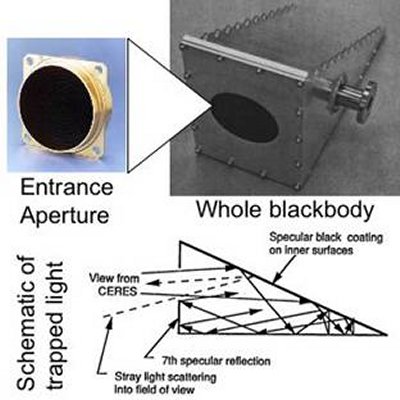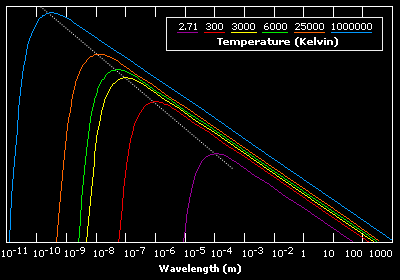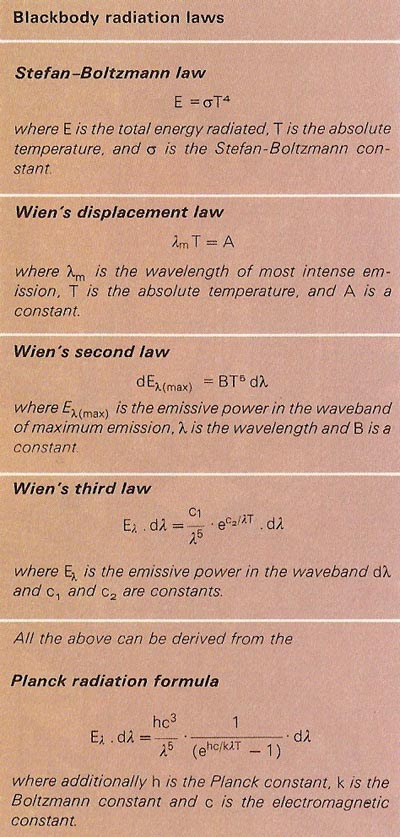blackbody

Practical approximation to a blackbody. Image credit: NASA.

Variation in blackbody curves with temperature. Image credit: ESA.

A blackbody is a theoretical object that is both a perfect absorber and a perfect radiator of electromagnetic radiation.
A blackbody absorbs all the radiation that falls on it, converts it into internal energy (heat), and then re-radiates this energy into the surroundings. The re-radiated thermal energy, known as blackbody radiation, has a continuous spectrum governed solely by the body's temperature.
For any given temperature, there is a specific wavelength at which radiation emission is greatest (see diagram labeled "Variation in blackbody curves with temperature").
The effective temperature (Te), or blackbody temperature, is the surface temperature that an object, such as a star, would have if it were a blackbody that radiated the same amount of energy per unit area. This is a useful and widely employed measure of stellar surface temperature. Te can be calculated from the Stefan-Boltzmann law, which states that the total energy radiated by a blackbody varies as the fourth power of its absolute temperature. This law leads to the formula:
L = 4σR2Te4
where L is the luminosity of the body, R is its radius, and σ (= 5.67 × 10-8 W/m2/K4) is the Stefan-Boltzmann constant. (A simplified form appears in the box on blackbody radiation laws in the bottom illustration.)
Substituting solar values for L and R gives a value for the effective temperature of the Sun of about 5,780 K.


